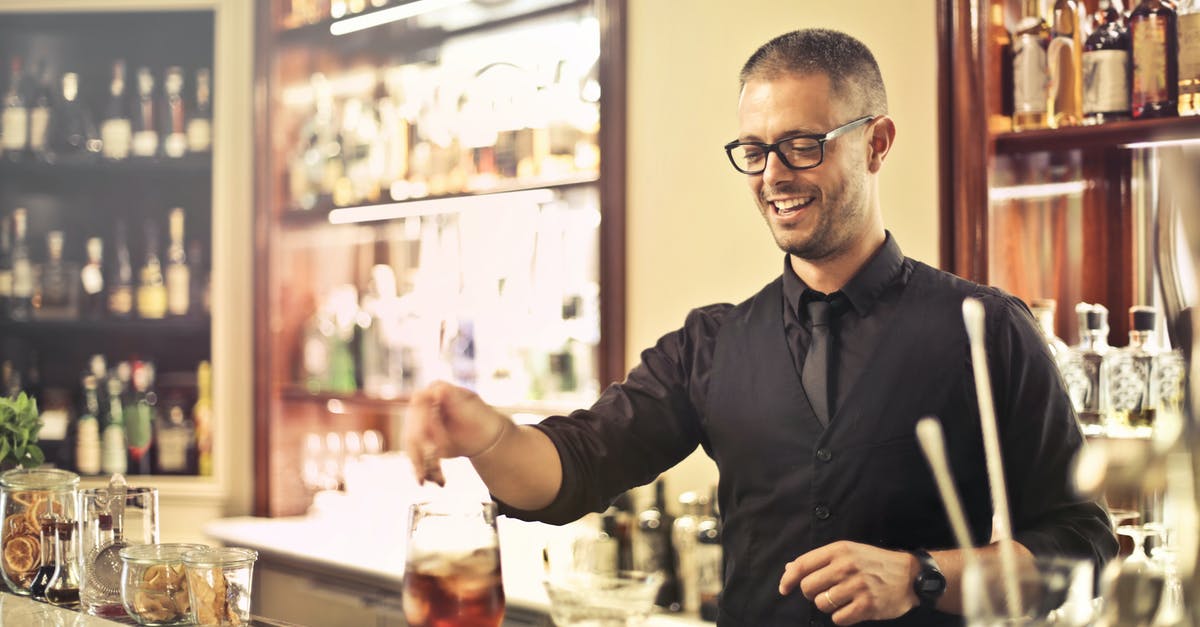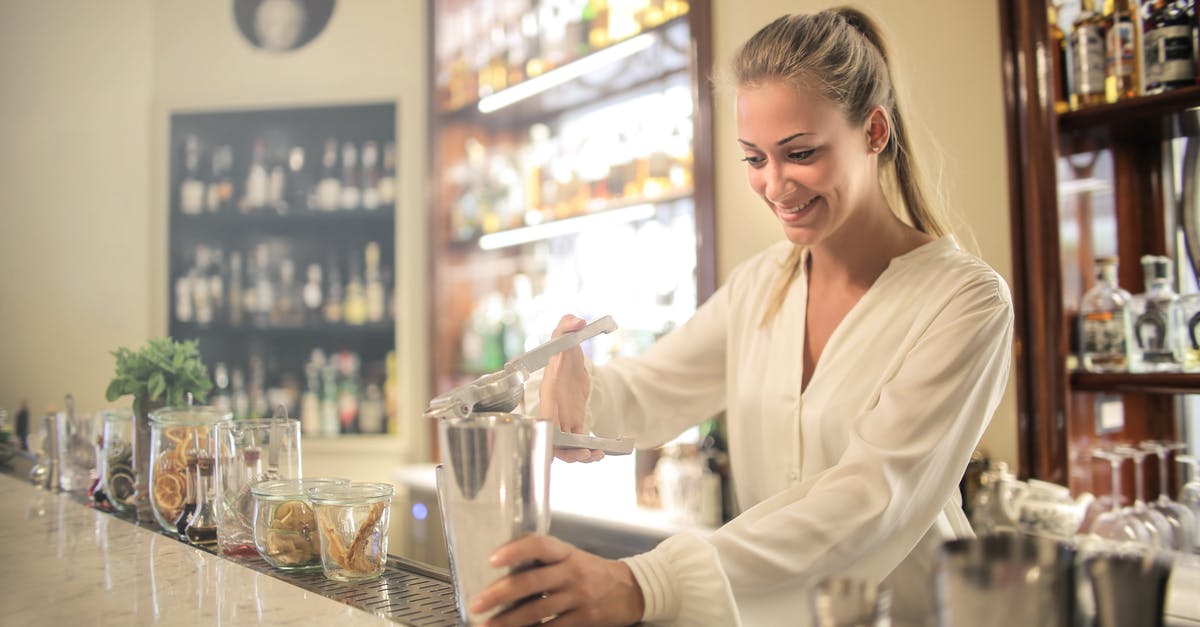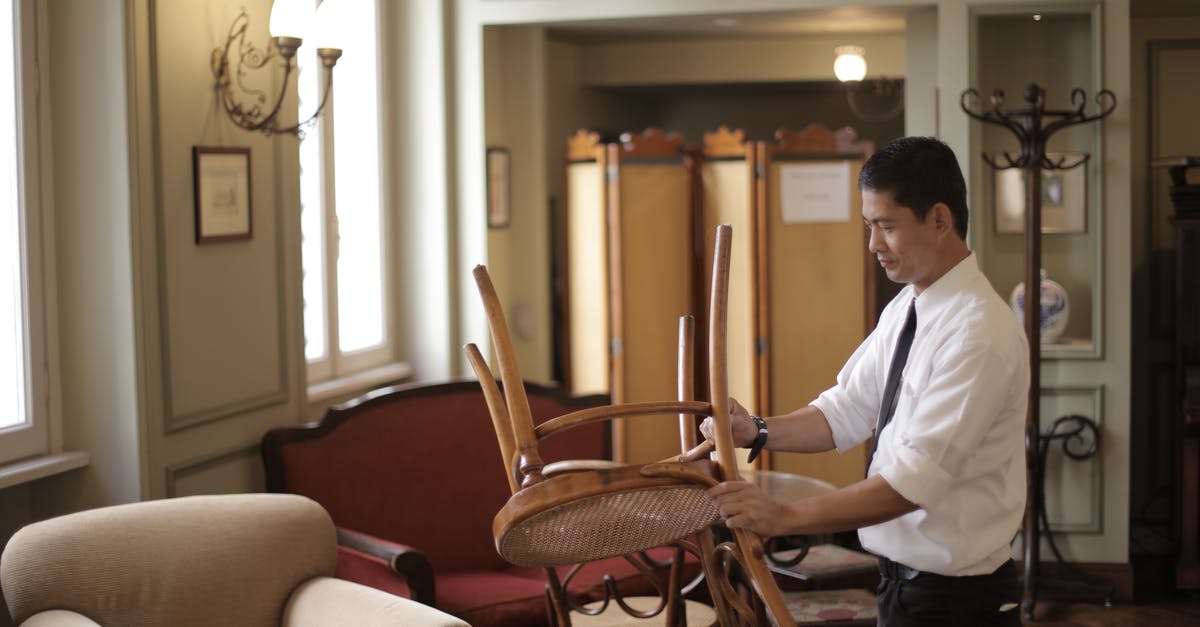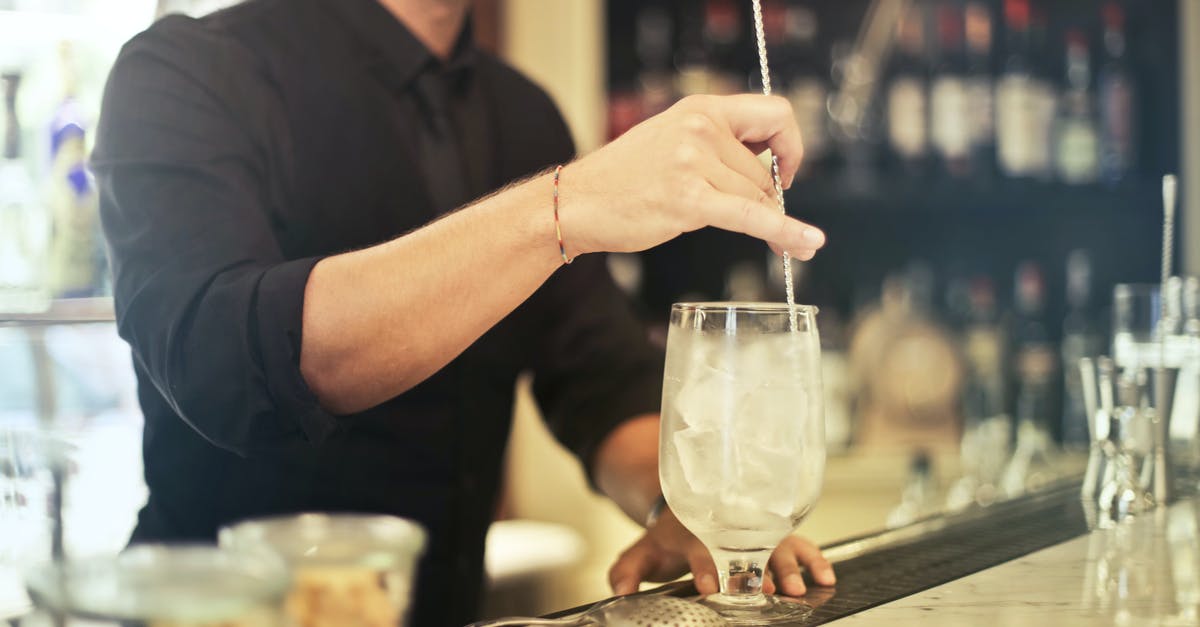What is the tipping process in restaurants in the US?

I'm supposed to write down something on the bill I get?
Do I hand the waiter my credit card after doing so?
Since I need a receipt, do I wait for the waiter to bring things back?
What's the process, from asking for the check till I can walk out with a receipt?
Best Answer
First, ask for the check. If you're in a real rush and paying by card, you could hand the waiter your credit card at this point to speed up the process a bit, but the normal thing to do is to ask for the check and wait for it to brought to you.
The waiter will bring you the check. Take a look and make sure everything is as expected. Let him or her know if you believe there is an error. Many restaurants will automatically add a tip for large parties (this is normally noted somewhere on the menu), and you can see that on the check here so you don't double-tip if this applies to you.
If you're paying cash, simply leave enough cash to cover the cost of the meal plus the tip. If you need change, just ask your waiter, who will generally be happy to ensure you have adequate change to tip.
If you're paying by card, place your credit card in the check-holder or hand it to the waiter. At most restaurants, they will take the card away from the table at this point (table-side wireless credit card machines, as commonly used in Europe, are not common in the United States).
Your waiter will normally come back with a few things:
- Your card, which you should promptly put back in your wallet before you leave it behind
- A pen
- Your receipt/credit card slip, sometimes marked "customer copy"
- The restaurant's receipt, which will have lines on it for tip and total, usually on top (sometimes there are just two identical slips. If so, it doesn't matter which you use)
- Sometimes, the original itemized receipt, which you may keep if you wish. The credit card slip may only show the total, while the itemized receipt shows what was ordered. Some companies may require this for expense reimbursement.
Find the restaurant copy of the receipt. Write the amount you wish to tip on the "tip" line, immediately below the amount. On the "total" line below, write the sum of the amount and the tip (yes, there is math involved, though if you don't do it, somebody will do it for you). Sign on the signature line at the bottom. Make sure you leave that receipt on the table.
The other receipt copy or copies are yours to take. If I need to know exactly how much I've spent (e.g. to submit the meal for reimbursement as a business expense), I'll take a second before I leave to jot down the total amount, with tip included, on my copy. When you're all done, leave the restaurant, taking the other receipt(s) with you.
As far as how much to tip, see our question How to tip in the United States?
Note that some restaurants, normally casual diner types of places, may bring you the check and then have you pay at a counter before you leave, instead of collecting the money or the card at the table. If this is the case at your restaurant, the waiter will let you know. The process is the same, but the handing over the card and signature process will happen elsewhere.
Pictures about "What is the tipping process in restaurants in the US?"



How do you tip at restaurants in America?
Tipping at restaurants in the United States15% is standard, but 18-25% of the total bill is a good rule of thumb. You can use the total bill BEFORE tax is added, as the tax is just the fee going to the local government. If your total for a meal is $35, and you received excellent service, your tip would be $7.How does tipping work in a restaurant?
The appropriate amount to tip servers depends on your service. 15% is appropriate for average service ; 20% if your server is above average. You should feel free to tip above 20% if you received excellent service. If you received poor service, it is better to talk to the manager than skip on the tip.Who gets tips host or server?
In many restaurants, servers are required to pool 20\u2013100% of their tips to be divided up by the manager and then distributed amongst the bartender, bus people, hostess, runners and other support staff.What is the correct percentage to tip at a restaurant?
Even if the service is bad, it's recommended you leave something. Check your tab carefully because some places add a gratuity to the bill. You may or may not want to supplement that. For the wait staff at sit-down restaurants, the tip should be 15 to 20 percent of the pretax bill.More answers regarding what is the tipping process in restaurants in the US?
Answer 2
A lot of restaurants use swipe-and-sign schema for tips, so it looks like this:
- You do ask for a check
- Waiter brings it to you
- You pass him the card, which will be used by cashier, maybe right at the table, maybe not
- You write down the tip amount on the check and sign it. In general, rule is that
15%is similar "everything was OK",18%"it was good", more than that if "everything was great" - If you write down less than
15%, and especially less than10%, you may get the manager with questions regarding the service. Sometimes they are very aggressive as waiter salaries do very depend from tips. - You'll get the
Holdoperation on your card for the initial sum; on transaction finalization you'll get the full sum.
It's OK to leave cash instead of tips by card, with similar percentages, so in this case you may not wait for the final check. Some restaurants include the tips in the check. In that case it's up to you to leave some additional sum to them if desired.
Answer 3
If you're paying with cash instead of a credit card, here are two options.
Option 1 is to simply leave exactly the total amount of money you'd like to pay on the table and then leave the restaurant. (Put the money inside the check holder if there is one.) If the check is $10 and you want to leave a $2 tip, leave $12.
Option 2 is to wait for the server to return and hand them some cash. You can give them the total amount and say "keep the change" or "I'm all set". Alternatively, you can give them a greater amount, and then ask for a specific amount back. For example, to pay a total of $12, you could give them $20 and say, "Can I get eight back, please?"
In my experience as a pizza delivery driver (which, I admit, is not the same as a restaurant server), people almost always ask for an even dollar amount back, like $8, rather than an uneven amount like $8.34. But you certainly can ask for $8.34 back if you want.
Answer 4
This is an addendum to other answers. As many have outlined, standard credit/debit card tipping process in US involves 2 passes:
Itemized check (check amount only)
Tip (whatever you write for the tip amount)
What we have found is that for non-US cards that we've had, only step #1 was working, #2 was, apparently, failing. How it looked for us:
Getting a check, giving waiter our card
Waiter returns our card with two (restaurant & customer) receipts
We write tip and total amount on receipt and sign it
We leave
Afterwards, we discover that only the check amount was charged, tip didn't go through
So, at the end, when we liked the service, we tipped with cash. When we didn't, we tipped with card :)
Answer 5
So things fall in to three categories around here (Florida)
- Most Common - Bill then Tip
- Get your bill
- Review the bill and clear up any thing that needs clearing up
- give bill and card to server
- usually, you would get a check holder with the bill
- you can review the bill, and if you agree put your card inside, then leave it on the table.
- The server will come by and pick up the check holder and your card
- the server runs your card for the amount on your check
- You get back the check holder with your card in it, and two receipts. There is a line for the tip and the total.
- Write in your tip and total, on both receipts, keep one copy for you and leave one for the waiter.
- leave when your ready, there is no reason to wait around.
- Less common - Turn your check into the register.
- get your check on your table.
- take your check to a register
- give your check to the attendant (usually different then your server)
- they will ask you if you want to leave a tip
- They will charge your card for the entire check + tip
- Least Common - Card processing at table
- You will get your check
- the server will bring a tablet or the like around and process youb payment in front of you.
- They will hand you the tablet for you to sign or enter you pin
- It will have a place to select a tip
Bonus Notes
Number 1 is by far the most common at "decent" establishments. Number 2 is reserved for places that are almost fast food or take out. If a place does a large quantity of take out expect number 2. Number 3 is not very popular. To me there is a bit of negative of having the person stand there while you decide their tip (more on this later). It' s almost like begging. Number 3 is mostly used as a gimmick these days (though it may become more popular).
When in a large group, tips may be added automatically. Make sure you ask. It is rare but tips may be added for small groups or individuals as well.
YOU DO NOT HAVE TO TIP It is not a requirement. You should. however tip for good service. You SHOULD NOT tip for bad service., but do try to be objective.
A 15% tip is standard. I use this as normal service, normal tip.
A 10% tip is considered poor. I usually use this for poor service, that was technically acceptable, but, for example, very slow.
A 20% tip is considered good. I usually use this for good service. Most places fall into this category.
A 25% or more is considered excellent. I rarely tip this much, but if service was really that good, then they earned it.
A tip of more then around 30% may be considered rude. Like a hand out instead of a well deserved bonus. Some people may not like it, others just go "woo free money".
When in a business context. Tip more conservatively. If your tipping 25% all the time it shows that you don't value your own money.If your tipping 5% it makes it look like your broke, or don't know the value of the service provided.
In a social context a big tip may be considered "showy" make sure to account for that.
Tipping, in general should be quite. it's not polite to ask others what they tipped, or to tell others what you tipped. It is ok to ask others what they think you should tip.
In shared checks, its usually better to tip solo (each person leaves their own tip).
NEVER TIP IN CASH!!! It's very easy for someone to pocket your tip. Bus boys that don't get tips, servers that are supposed to share but don't, strangers just walking by the table. Just don't tip in cash. If you do tip in cash, hand it to the server directly.
Servers get paid less then minimum wage, and tips are expected to "make up" part of their earnings. Some servers make $300-$400 a night or more on tips, others are lucky to make $10 on tips.
Other members of the staff, particularly bus boys, cooks, and other service staff may get a share of the tips. This varies from place to place.
Answer 6
I live in the U.S. and I've been told that technically, you don't tip on the tax, so to calculate the tip use the pre-tax figure base the tip on. Usually it doesn't make that much difference, but it could if the bill is big or you just like exact percentages. For the record, I tip on the total, not the pre-tax, but I thought that I'd mention it anyway. Other then that what everyone else wrote about the percentages is also what I do.
Answer 7
Just adding some technical detail: In the US, for most credit (and even debit) cards, when you swipe the card, a transaction is created. This is what happens when your server swipes the card (step 2 in cpast's answer above. if you look at your bank/card statement at this point, this transaction will show up as "pending".
At some later time* one of the restaurant employees will submit all these transactions for "settlement". They will look determine the total amount including tip from the copy of the receipt (step 4), and now the transaction with the new amount will appear on your statement.
*After close of business, or sometimes even a day or two later
Sources: Stack Exchange - This article follows the attribution requirements of Stack Exchange and is licensed under CC BY-SA 3.0.
Images: Andrea Piacquadio, Andrea Piacquadio, Andrea Piacquadio, Andrea Piacquadio
